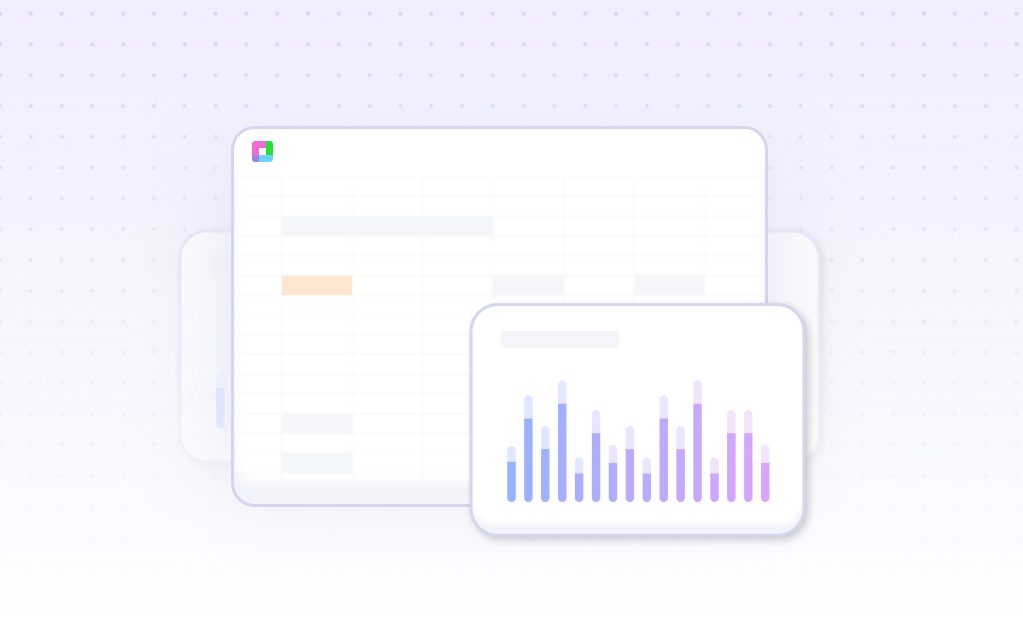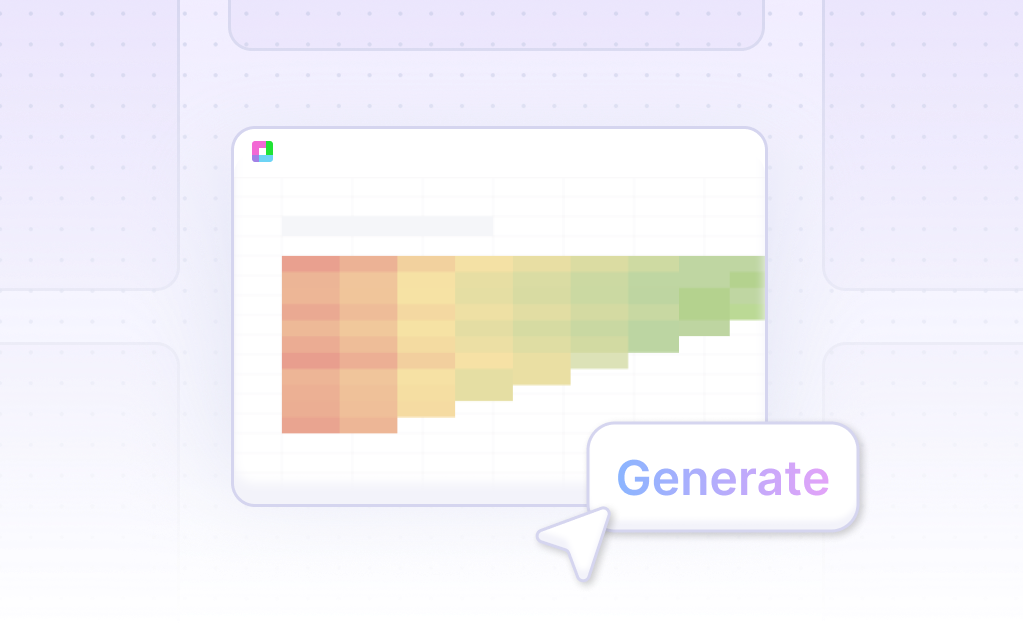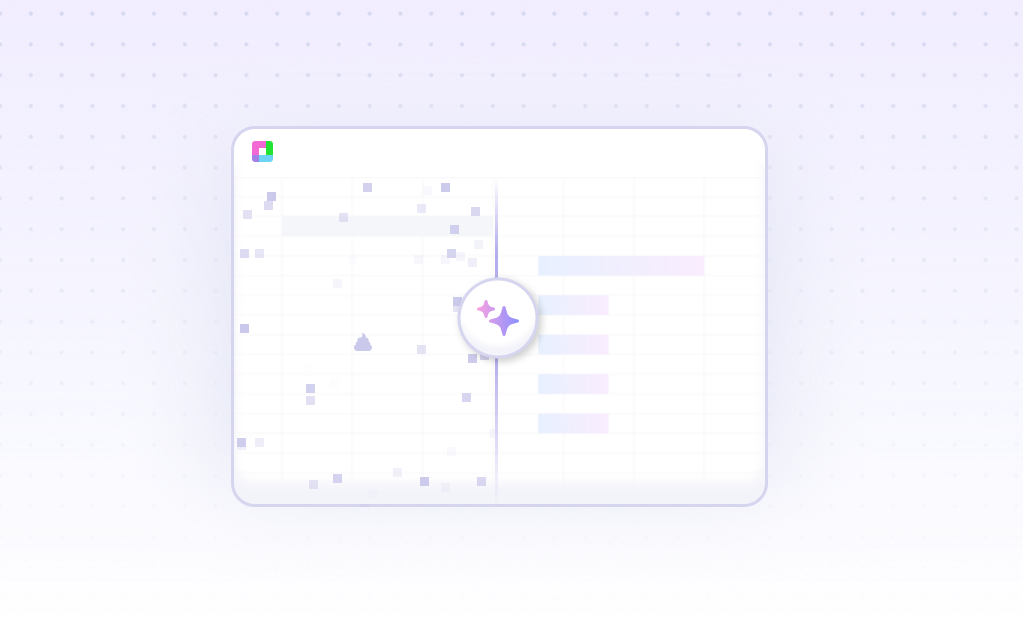
Introduction
Creating statistical charts can be significantly enhanced by tools like Sourcetable, an AI-powered spreadsheet, or by using traditional spreadsheet software such as Excel or Google Sheets. Sourcetable simplifies the process of data visualization by providing an AI spreadsheet assistant. This assistant guides users through creating templates, charts, and graphs effortlessly.
This page will detail methods for generating statistical charts using both AI-enhanced and traditional approaches. Whether you are a novice or an experienced spreadsheet user, these tools can enhance your ability to visualize and analyze data.
To begin creating your first statistical chart with ease, sign up for Sourcetable at sourcetable.com/signup. Continue reading for more valuable information on chart generation without AI.
What is a Statistical Chart?
Definition and Purpose
Statistical charts are used to display and organize data, allowing for clearer visualization. They help simplify applied mathematics and describe analytical knowledge accurately. By using statistical charts, you can compare data between multiple sets or different sources, making quantitative observations and identifying variations easily.
Types of Statistical Charts
There are various types of statistical charts, including histograms, bar charts, scatter plots, pie charts, heatmaps, and box plots. Each type serves a specific purpose. For example, histograms display quantitative data, while bar charts and pie charts are used for categorical data. Scatter plots showcase relationships between multiple variables.
Benefits of Using Statistical Charts
Statistical charts provide an improved understanding of analytical knowledge and are visually appealing. They reveal hidden patterns and relationships in data, helping identify the most significant features effectively. These charts also facilitate making quantitative observations and comparing data seamlessly.
Creating a Statistical Chart
To create a statistical chart, start by selecting the data. Choose a chart type based on your data, such as bar charts for comparing individual items or line graphs for finding outliers. Use the "Insert > Recommended Charts" feature to preview and select the appropriate chart, then click OK to generate it.
Applications in Data Analysis
In exploratory data analysis (EDA), statistical charts are invaluable. They can identify outliers, highlight the "vital few," and find data errors. For instance, histograms, scatter plots, and box plots are commonly used to pinpoint outliers. Heatmaps and mosaic plots can reveal data errors and relationships between variables.
Choosing the Right Chart
Select the chart type that best represents your data. Use pie charts for part-to-whole relationships, scatter plots for numeric comparisons, and area charts for changes over time. Decision-making improves when the appropriate chart type enhances data interpretation and communication.
When to Use a Statistical Chart
Overview
Statistical charts are vital tools for visualizing data. They simplify complex datasets, making it easier to identify trends and patterns. Use them to convey numerical data clearly and concisely.
Pros and Cons
Advantages of Statistical Charts
Statistical charts offer several benefits:
- Clarity: They make data easily understandable.
- Efficiency: They quickly convey information.
- Comparison: They facilitate easy comparison of data points.
Disadvantages of Statistical Charts
Despite their advantages, statistical charts have limitations:
- Over-simplification: They can sometimes oversimplify complex data.
- Accuracy: They might obscure specific details due to summarization.
- Misleading: They can be misleading if not designed correctly.
Comparison with Other Graphs
Compared to other graphs:
- Bar Charts: Better for categorical data, but less effective for showing distributions.
- Line Graphs: Excellent for time series, but less useful for categorical comparisons.
- Pie Charts: Good for showing proportions, but not suitable for large datasets.
How to Generate a Statistical Chart with Sourcetable
- Sourcetable, an AI spreadsheet tool, makes generating a Statistical Chart easy. You can do it manually like in Excel or Google Sheets. However, Sourcetable AI offers a more efficient method.
- First, create sample data using Sourcetable's AI assistant or upload a CSV. This step ensures you have the necessary data to work with. Making it simple and user-friendly, Sourcetable allows for quick data preparation.
- Next, select the range of data you want to transform into a Statistical Chart. Highlighting relevant data is crucial for accuracy and clarity in your chart.
- Then, ask the AI assistant to generate the Statistical Chart. With a click, the AI handles the chart creation process, saving you time and effort.
- Finally, use the AI assistant to refine or iterate on the Statistical Chart. You can specify changes to formatting, labels, and other elements, ensuring the chart meets your precise requirements.
How to Generate a Statistical Chart in Excel and Google Sheets
Creating a Statistical Chart in Excel
To generate a statistical chart in Excel, start by selecting the data you want to visualize. After selecting the data, click INSERT followed by Recommended Charts.
Scroll through the recommended charts to preview how each looks with your data. If you want to explore more options, click All Charts to see all available chart types. Once you find the desired chart type, select it and click OK to create the chart.
To enhance your chart, use the Chart Elements button to add axis titles and data labels. The Chart Styles button allows for customization of the chart's appearance, while the Chart Filters button enables you to adjust the data displayed.
Creating a Statistical Chart in Google Sheets
In Google Sheets, start by highlighting the range of data you want to include in your chart. Next, click on the Insert menu and choose Chart.
Choose the type of chart you want to create. Bar graphs are ideal for comparing statistics, pie charts show how parts make up a whole, and histograms compare data over time. Click on Chart Types to switch the rows and columns, and use Customization for additional formatting options. Finally, click Insert to create your chart.
Formatting and Customizing Charts
Excel offers extensive formatting options. Clicking on a chart title allows you to type and format the title. For adding a legend, click a blank area of the chart, then the Chart Elements button, and select Legend. Use the format options to adjust the legend's appearance.
In Google Sheets, use the More > Edit Chart options to customize your chart. Adjust titles, colors, and fonts to fit your needs.
Saving and Using Templates in Excel
You can create templates in Excel by selecting a chart, right-clicking, and choosing Save As Template. To apply a template, select the chart data, click the Insert tab, then See All Charts, and choose the template from the Templates option.
For sparklines, select the data, click the Insert tab, choose a Sparkline type, select the cell for the Sparkline, and click OK.
Use Cases Unlocked by Visualizing Data Using a Statistical Chart
Improving Sales Performance |
Visualizing sales data using statistical charts helps identify trends and patterns over time. This allows businesses to pinpoint successful strategies and areas needing improvement, driving overall sales performance. |
Enhancing Marketing Strategies |
Statistical charts provide clear insights into marketing campaign performance. Marketers can easily compare different campaigns, understand their impact, and make data-driven adjustments to optimize future marketing efforts. |
Monitoring Financial Health |
Using statistical charts to visualize financial data enables quick assessment of a company's financial health. Key financial indicators, such as revenue and expenses, can be readily analyzed to ensure fiscal responsibility and profitability. |
Tracking Customer Behavior |
Charts depicting customer data help businesses understand consumer behavior and preferences. This information is crucial for tailoring products, services, and marketing efforts to meet customer needs effectively. |
Optimizing Supply Chain |
Visualizing supply chain data through statistical charts aids in identifying bottlenecks and inefficiencies. Businesses can optimize their supply chain operations by analyzing trends and making informed logistical decisions. |
Assessing Employee Performance |
Statistical charts provide a clear view of employee performance metrics. This helps managers identify high performers, areas for improvement, and the effectiveness of training programs, fostering a productive workplace. |
Enhancing Product Development |
Product development teams can use statistical charts to track product performance and user feedback. This data visualization aids in making informed decisions about product iterations and enhancements. |
Frequently Asked Questions
Does the story told in the headline match the data used to bolster it?
It's crucial to verify that the data used supports the headline's narrative. Mismatched data can mislead the audience and undermine credibility.
Is the scale appropriate for this data?
Ensure that the scale accurately reflects the data. An inappropriate scale can distort the visual presentation and mislead the interpretation.
What data has been left out of this picture?
Missing data might skew the visualization. Always consider what information has been excluded and how its absence affects the overall story.
What data has been edited out?
Determine what data has been removed in the editing process. Edited-out data might provide crucial context for understanding the full picture.
How do I choose the right chart type?
Consider the metrics, features, variables, and audience when selecting a chart type. Different charts (bar, line, scatter, box) serve various purposes, from showing trends to comparing values.
Conclusion
Throughout this guide, we've explored what a Statistical Chart is, and the methodologies to create one, either with the aid of AI in Sourcetable or using traditional spreadsheet software like Excel or Google Sheets. Sourcetable simplifies the process with its AI spreadsheet assistant, enabling users to easily create charts and graphs, whereas traditional spreadsheets require manual setup and design.
Using Sourcetable's AI capabilities allows even novice users to become spreadsheet power users by generating sophisticated statistical charts effortlessly. This contrasted with the more time-consuming method of traditionally creating charts in spreadsheet programs, highlights the efficiency and user-friendliness of utilizing AI for data visualization tasks.
To experience the ease of creating statistical charts with AI, sign up for Sourcetable today. Get started on generating your first Statistical Chart swiftly and conveniently.
Frequently Asked Questions
If you question is not covered here, you can contact our team.
Contact Us





